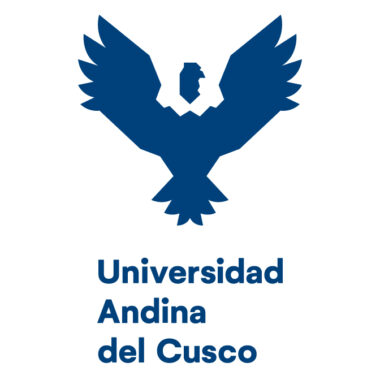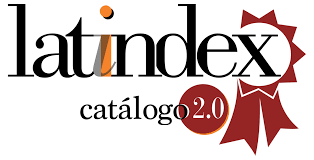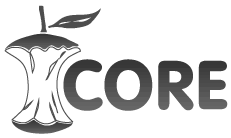El metadiscurso interpersonal: aplicación y funciones en artículos de investigación científica – universitaria
DOI:
https://doi.org/10.36881/yachay.v10i1.529Keywords:
Artículos, Investigación, Metadiscurso, InterpersonalAbstract
The purpose of this article accounts for the interpersonal metadiscursive analysis of the different typologies that are handled on metadiscursive strategies as well as the modality modifiers introduced in a written corpus of university scientific research articles from various disciplines with the aim of determining how the University researchers make known their commitment, position with the discipline, the interrelation with their peers which may be related according to the type of research. The metadiscursive functions were identified according to the categories of interpersonal metadiscourse proposed by Hyland (2000) where we analyzed the markers of discursive nuances, certainty markers, attributing markers, attitudinal markers and comments. As it is a type of analysis of recent application, the article analyzes these proposed implications based on corpus and its most relevant aspects and allows us to reflect on the discursive practices themselves.
Downloads
References
Crismore, A., Markkanen, R. & Steffenson, M. (1993). Metadiscourse in persuasive writing: A study of texts written by American and Finnish university students. [Written Communication] 10(1), 39–71.
Caraballo, P. (2015). Enseñar a escribir desde los autores. Revista Hispanoamericana Espacio Abierto. 24 (3): 141-158
Dafouz Milne, E. (2008): The pragmatic role of textual and interpersonal metadiscourse markers in the construction and attainment of persuasion: a cross-linguistic study of newspaper discourse”. Journal of Pragmatics. 40 (1): 95-113.
Ferrari, L. (2003). Modalidad epistémica y grados de certeza en los artículos de investigación. [Ponencia presentada en el III Congreso de Lenguas del Mercosur: De la teoría a la Praxis de las Lenguas]. Universidad Nacional del Nordeste, Resistencia, Chaco, Argentina.
Ferrari, L. (2004). Modalidad y evaluación en artículos de investigación. [Actas del III Coloquio Nacional de Investigadores en Estudios del Discurso, ALED]. Argentina.
Halliday, M.A.K. (1985). An introduction to functional grammar. London: Edward Arnold.
Halliday, M.A.K. (1978). Language as social semiotic: The Social Interpretation of Language and Meaning. London: Edward Arnold.
Hyland, K. & Milton, J. (1997). Qualifications and certainty in L1 and L2 students’ writing. Journal of Second Language Writing, 6(2), 183–205.
Hyland, K. (1999a). Disciplinary discourses: Writer stance in research articles. En C. Candlin & K. Hyland (Eds.), Writing: Texts, processes and practices (pp. 99– 121). London: Longman.
Hyland, K. (2000). Disciplinary discourses. Social interactions in academic writing. London: Longman.
García, J. (2000). Variación de uso del metadiscurso en resúmenes de investigación para congresos. Cuadernos Lengua y Habla, 2, 231–249.
García, M. (2004). Análisis discursivo de ensayos estudiantiles .
López, C. (2001). La comunicación del saber en los géneros académicos: Recursos lingüísticos de modalidad epistémica y evidencialidad. [Ponencia presentada en la V International Conference on Language for Specific Purposes, Canet del Mar], Barcelona, España.
Myers, G. (1999). Interaction in writing: Principles and problems. En C. Candlin & K. Hyland (Eds.), Writing: Texts, processes and practices (pp.40–61). London: Longman.
Nystrand, M. (1986). The structure of written communication: Studies in reciprocity between writers and readers. Orlando, Fl.: Academic Press.
Sedano, M. (1990). Hendidas y otras construcciones con ser en el habla de Caracas. Caracas: Universidad Central de Venezuela.
Stubbs, M. (1986). A matter of prolonged field work: Notes toward a modal of grammar of English. Applied Linguistics, 7(1), 1–25.
Stubbs, M. (1996). Text and corpus analysis. Oxford: Blackwell.
Swales, J. (1990). Genre analysis: English in academic and research settings. Cambridge: Cambridge University Press
Suau Jiménez, F. (2005). The difficult balance between author’s and scientific community’s power over research articles in Applied Linguistics. LSP and Professional Communication. Vol. 5, 59-72
Suau Jiménez, F. & Dolón Herrero, R. (2008). El metadiscurso en la traducción de textos performativos. [Ponencia]. Congreso Internacional de Aesla. Almería, abril de 2008.
Thompson, G. (1996). Voices in the text: Discourse perspectives on language reports. Applied Linguistics, 17, 501–530.
Thompson, G. & Hunston, S. (2001). Evaluation: An introduction. En S. Hunston & G. Thompson (Eds.). Evaluation in text. Authorial stance and the construction of discourse (pp. 1–27). Oxford: Oxford University Press
Vande Kopple, W. J. (1985). Some exploratory discourse on metadiscourse. College Composition and Communication 36. pp. 82-93.
Additional Files
Published
How to Cite
Issue
Section
License
You are free to:
- Share — copy and redistribute the material in any medium or format
- Adapt — remix, transform, and build upon the material
- The licensor cannot revoke these freedoms as long as you follow the license terms.
Under the following terms:
-
Attribution — You must give appropriate credit, provide a link to the license, and indicate if changes were made. You may do so in any reasonable manner, but not in any way that suggests the licensor endorses you or your use.













